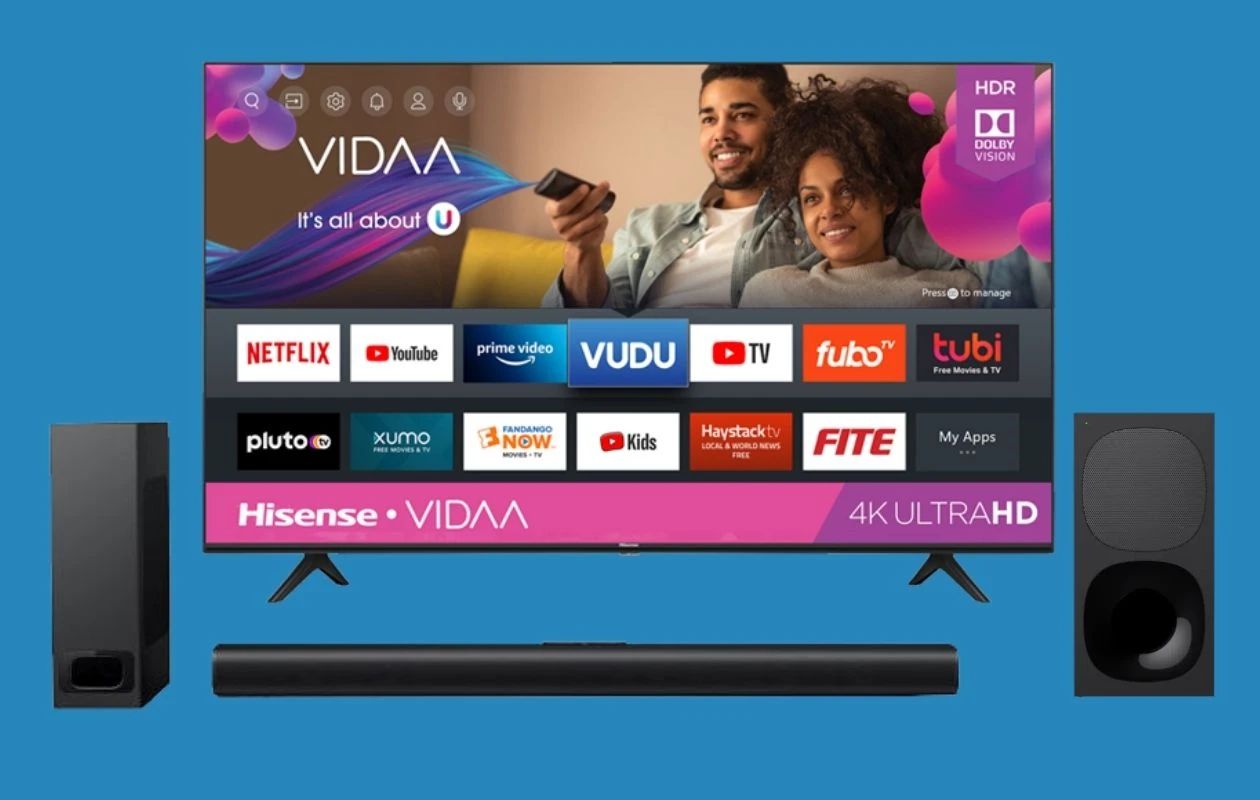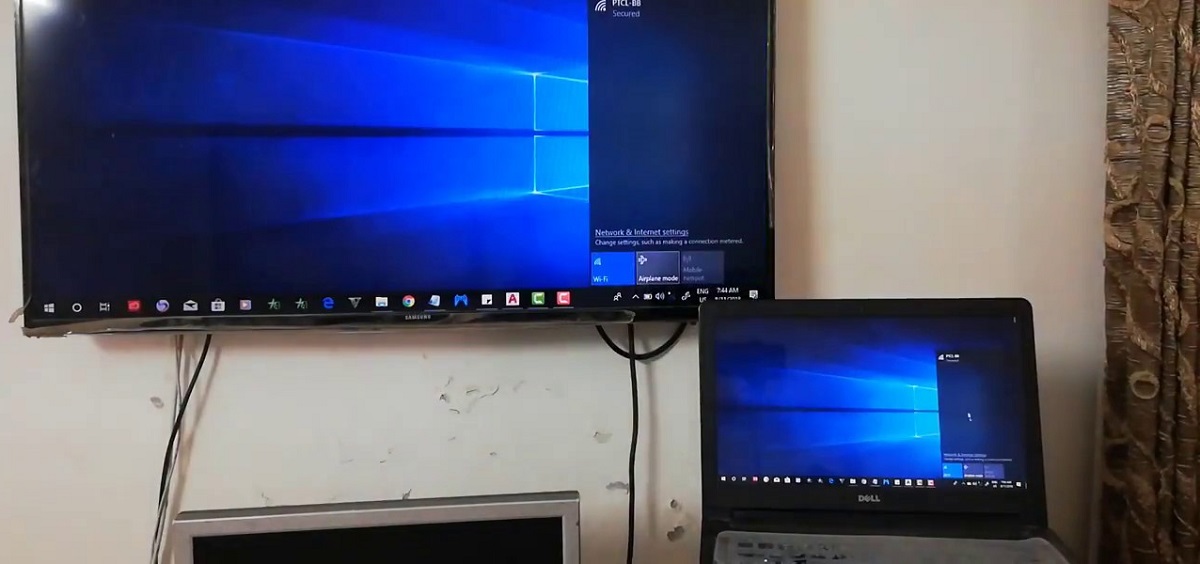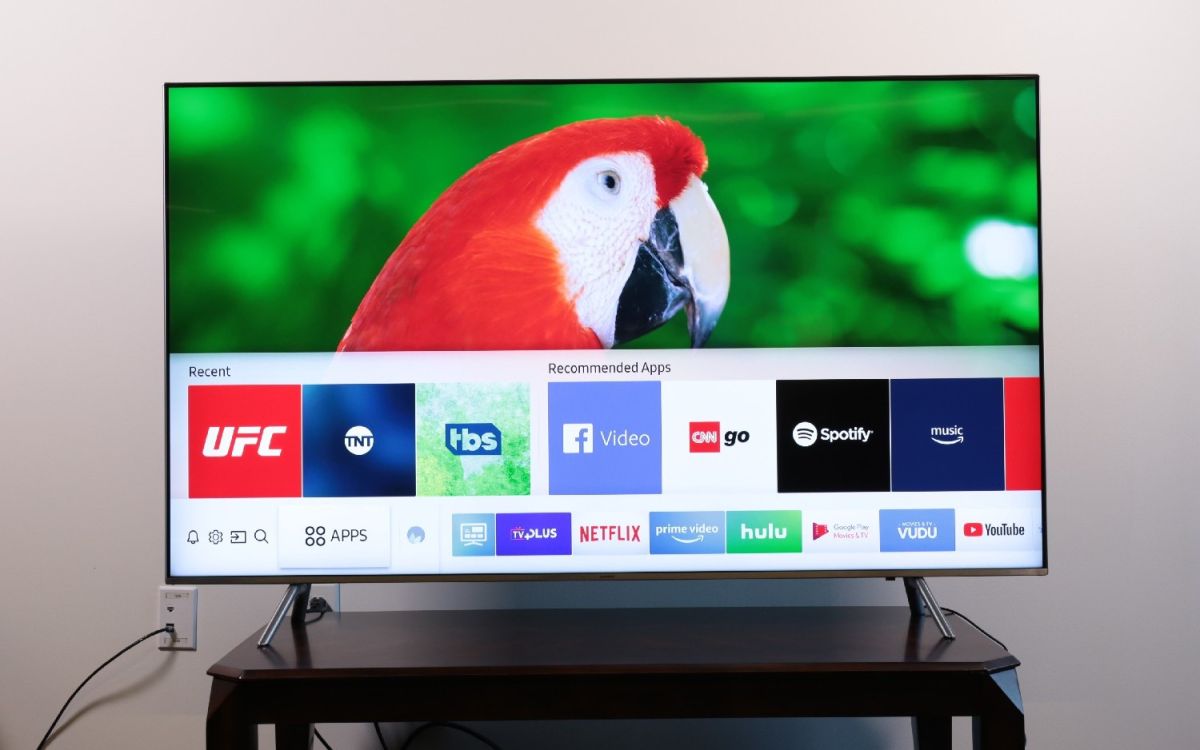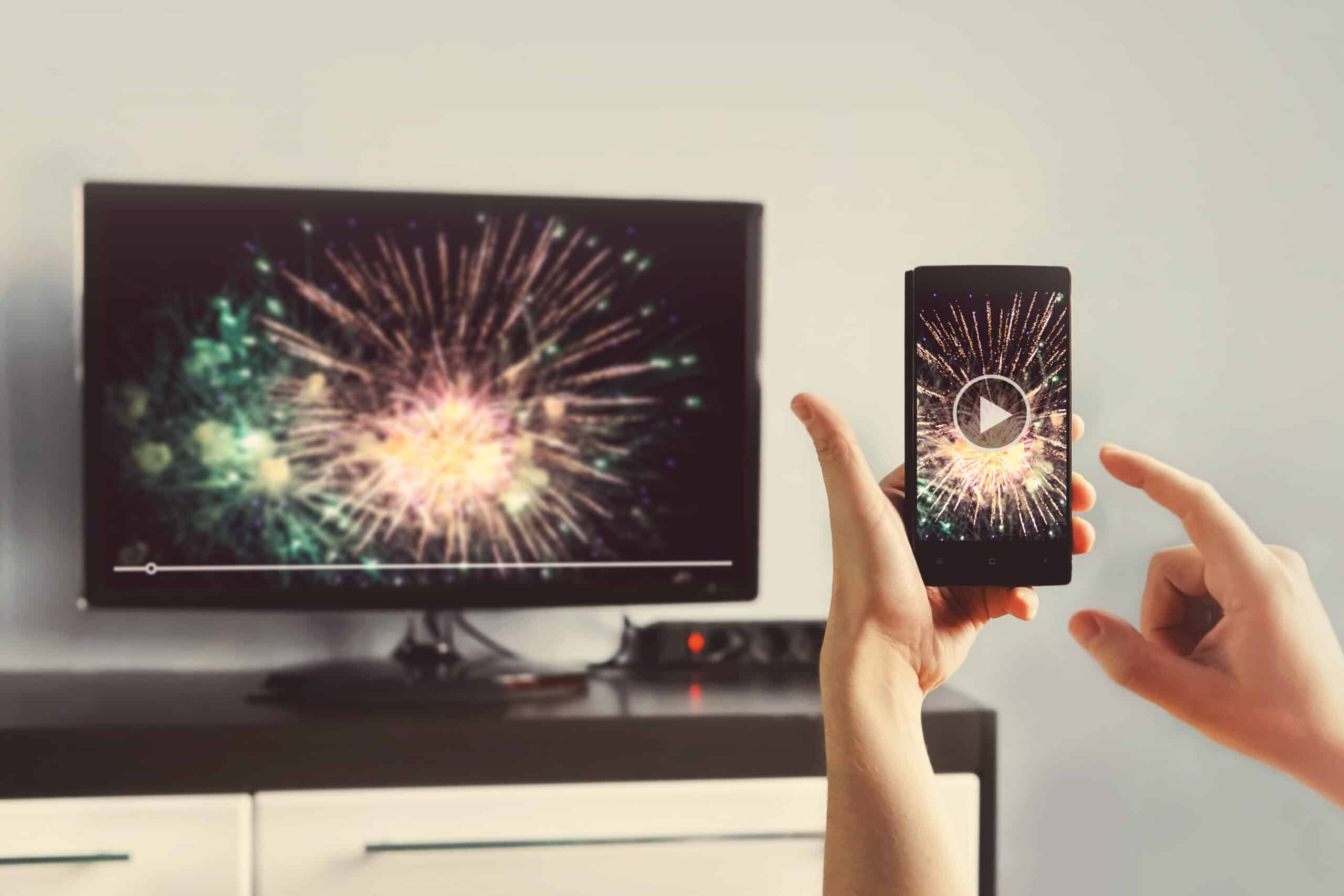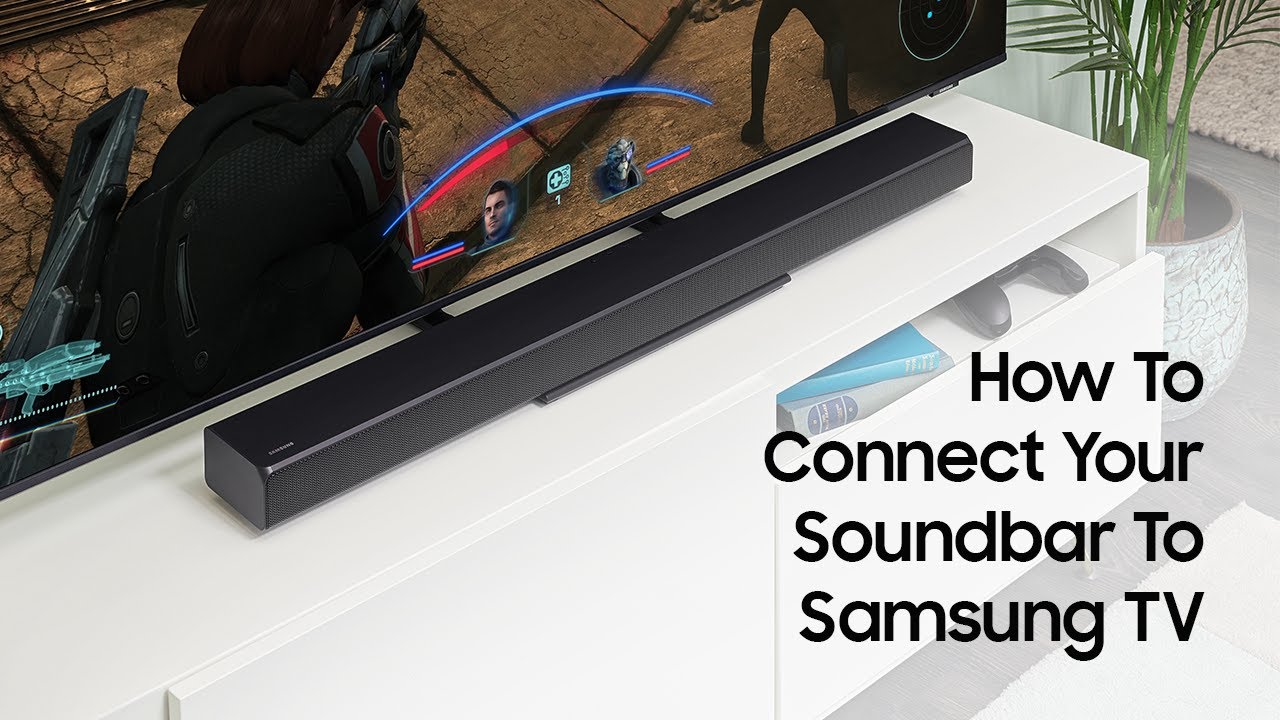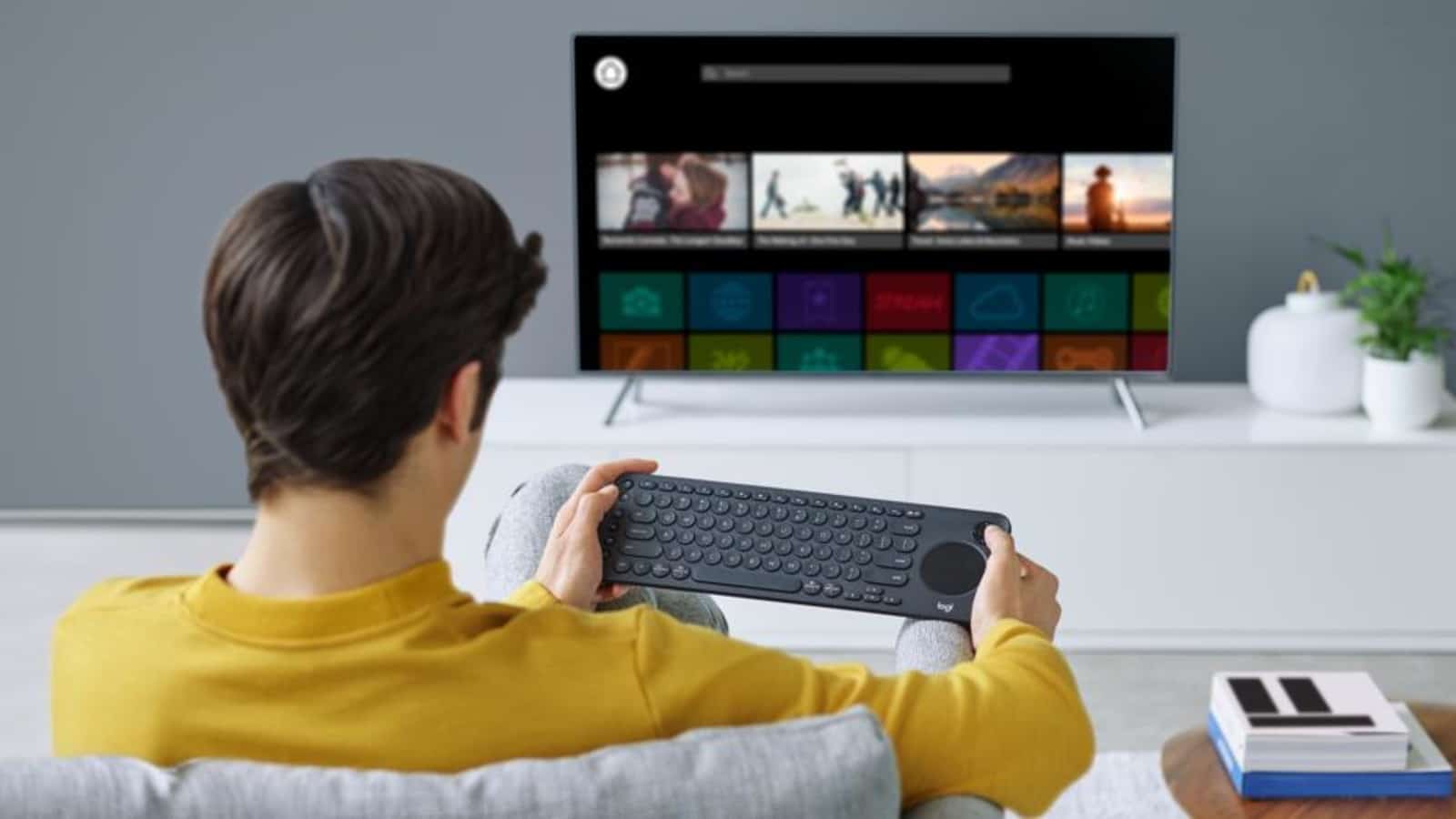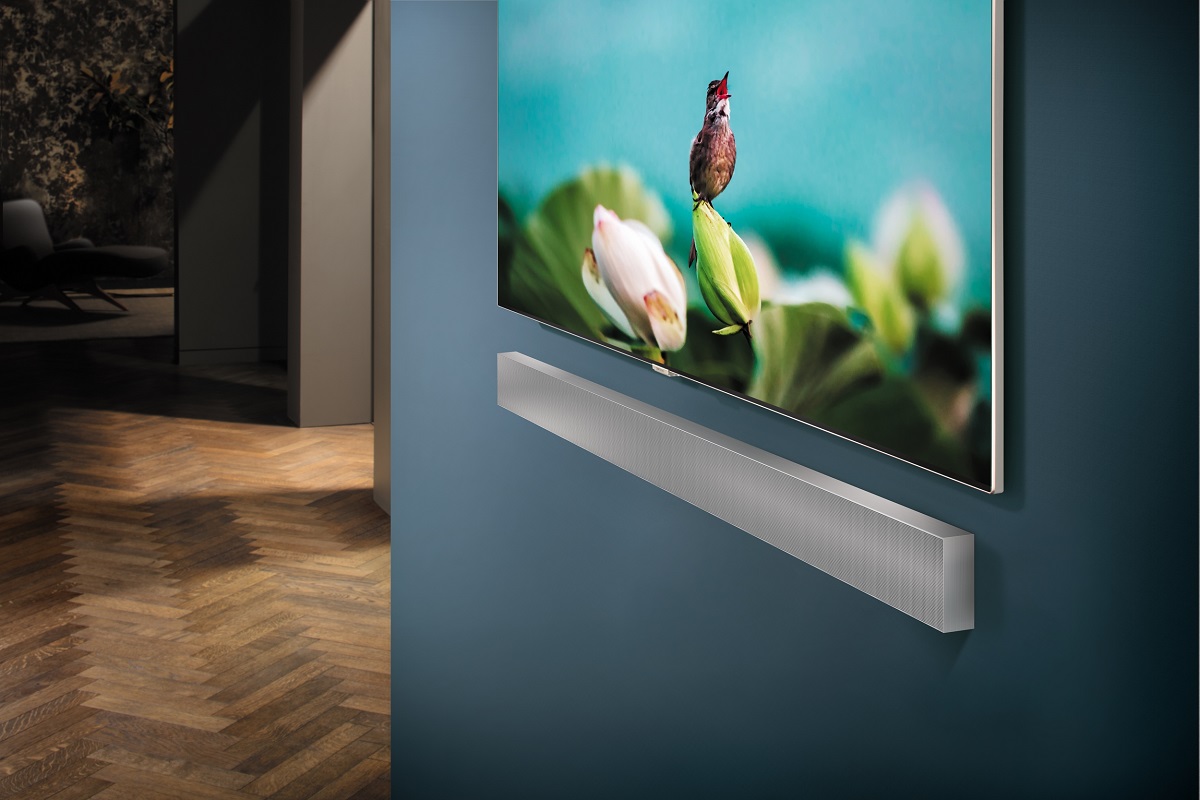Introduction
Samsung smart TVs are known for their advanced features and capabilities, and one such feature is Bluetooth connectivity. With Bluetooth, you can connect your TV to a variety of devices such as headphones, speakers, and even your smartphone. This allows for a seamless audio and video experience without the hassle of cables and wires.
Enabling Bluetooth on your Samsung smart TV is a straightforward process, but it varies depending on the model and software version of your TV. In this guide, we will walk you through the steps to enable Bluetooth on your Samsung smart TV and connect compatible devices. Whether you want to enjoy a movie with wireless headphones or stream music through a Bluetooth speaker, this article will help you make the necessary settings to get your devices connected.
It’s important to note that not all Samsung smart TVs have built-in Bluetooth capabilities. Some older models may require the use of an external Bluetooth adapter. Before proceeding with the steps, ensure that your TV has Bluetooth functionality or check if you need to purchase an adapter to enable Bluetooth connectivity.
By following the simple instructions outlined in this guide, you’ll be able to unlock the full potential of your Samsung smart TV by connecting it to a wide range of Bluetooth devices. Say goodbye to tangled wires and enjoy the convenience of wireless connectivity, making your TV viewing experience even more enjoyable.
Step 1: Check TV Compatibility
Before attempting to enable Bluetooth on your Samsung smart TV, it’s important to ensure that your TV model has built-in Bluetooth capabilities. While many newer Samsung smart TVs come with Bluetooth functionality, it’s always best to double-check to avoid any disappointment or confusion.
The easiest way to determine if your Samsung smart TV has Bluetooth is to consult the user manual that came with your TV. The user manual should contain detailed information about the features and specifications of your specific model. Look for a section that mentions Bluetooth connectivity or wireless audio options.
If you don’t have the user manual handy, you can also visit the official Samsung website and search for your TV model. Once you find the support page for your specific TV model, navigate to the specifications section. Look for Bluetooth among the listed specifications to confirm if your TV supports it.
Additionally, you can also check the TV’s settings menu for Bluetooth options. On most Samsung smart TVs, you can access the settings menu by pressing the Menu button on your remote control and navigating to the Settings or System menu. Look for an option related to wireless connectivity or Bluetooth settings.
If, after conducting these checks, you determine that your Samsung smart TV does not have built-in Bluetooth capabilities, don’t worry. You may still be able to enjoy Bluetooth connectivity by using an external Bluetooth adapter. These adapters can be easily plugged into the USB port of your TV and provide Bluetooth functionality. However, ensure that the Bluetooth adapter you purchase is compatible with your specific TV model.
Once you’ve confirmed that your TV is Bluetooth compatible, you can proceed to the next step to learn how to activate Bluetooth on your Samsung smart TV.
Step 2: Activate Bluetooth on Samsung Smart TV
Activating Bluetooth on your Samsung smart TV is a relatively simple process. The exact steps may vary slightly depending on the model and software version of your TV, but the general process remains the same. Here’s how to activate Bluetooth on your Samsung smart TV:
- Using your TV’s remote control, press the Menu button to access the settings menu.
- Navigate to the Settings or System menu using the arrow keys on the remote control.
- Look for an option related to connectivity or Bluetooth. This option may be labeled as “Bluetooth” or “Wireless and Networks.”
- Select the Bluetooth option to access the Bluetooth settings.
- Toggle the Bluetooth switch to the “On” position. This will activate Bluetooth on your Samsung smart TV.
- Once activated, your TV will start scanning for available Bluetooth devices. This may take a few moments, so be patient.
After following these steps, Bluetooth should now be activated on your Samsung smart TV. Now you can proceed to the next step to learn how to connect Bluetooth devices to your TV.
It’s important to note that the exact steps and menu options may vary depending on your TV’s model and software version. If you’re having trouble finding the Bluetooth activation option on your specific TV, refer to the user manual or visit the Samsung support website for detailed instructions specific to your model.
Step 3: Connect Bluetooth Device to Samsung Smart TV
Now that Bluetooth is activated on your Samsung smart TV, you can proceed to connect your desired Bluetooth device. Whether it’s a pair of wireless headphones, a Bluetooth speaker, or even your smartphone, here’s how to connect a Bluetooth device to your Samsung smart TV:
- Make sure the Bluetooth device you want to connect is in pairing mode. Refer to the device’s user manual for instructions on how to put it into pairing mode.
- Using your TV’s remote control, navigate to the Bluetooth settings menu as mentioned in step 2.
- Under the Bluetooth settings, look for an option to scan for nearby Bluetooth devices. Select this option to start scanning.
- Your Samsung smart TV will display a list of available Bluetooth devices. Select the device you want to connect to from the list.
- Depending on the device, you may be prompted to enter a PIN or confirm a pairing request. Follow the on-screen instructions to complete the pairing process.
After following these steps, your Bluetooth device should now be successfully connected to your Samsung smart TV. You can now enjoy wireless audio or other features provided by the connected Bluetooth device.
It’s worth mentioning that some Bluetooth devices may have additional settings or requirements for proper compatibility with your TV. It’s a good idea to consult the user manual or manufacturer’s website for detailed instructions on connecting specific Bluetooth devices to your TV.
If you want to connect multiple Bluetooth devices to your Samsung smart TV, you can repeat these steps for each device. Just ensure that you have enough Bluetooth device slots available on your TV, as some models have limitations on the number of simultaneous connections.
Now that you have successfully connected your Bluetooth device to your Samsung smart TV, it’s time to move onto the next step and adjust the Bluetooth settings for optimal performance.
Step 4: Adjust Bluetooth Settings
Adjusting the Bluetooth settings on your Samsung smart TV can help optimize the performance and customize the Bluetooth connection according to your preferences. Here are some settings you can consider adjusting:
- Audio Output: By default, the audio may be set to play through the TV’s built-in speakers. If you want the audio to be output through the connected Bluetooth device, you can go to the TV’s settings menu and select the audio output option. Choose the connected Bluetooth device as the audio output source.
- Volume Control: Some Bluetooth devices may have their own volume control functionality. If you prefer to control the volume directly from the Bluetooth device, you can go to the Bluetooth settings menu on the TV and enable the option to control the volume using the connected device.
- Device Management: If you have multiple Bluetooth devices connected to your TV, you can manage them in the Bluetooth settings menu. This includes renaming devices, removing devices, or setting priorities for device connections.
- Pairing Options: In the Bluetooth settings menu, you can also find options related to pairing, such as automatically connecting previously paired devices or enabling/disabling device visibility.
- Codec Selection: Some Samsung smart TVs offer codec selection options for Bluetooth audio. Codecs determine the quality of the audio transmission. If available, you can experiment with different codecs to find the one that provides the best audio quality for your specific Bluetooth device.
To adjust these settings, simply navigate to the Bluetooth settings menu on your Samsung smart TV using the TV’s remote control. Explore the available options and make the changes according to your preferences.
Keep in mind that the specific Bluetooth settings and options may vary depending on your TV model and software version. If you’re unsure about any specific settings or need further guidance, refer to the user manual or visit the Samsung support website for detailed instructions.
By adjusting the Bluetooth settings on your Samsung smart TV, you can ensure a seamless and optimized experience when using Bluetooth devices with your TV. Take some time to explore and customize these settings to enhance your overall audio and viewing experience.
Step 5: Troubleshooting Tips
While enabling and connecting Bluetooth devices to your Samsung smart TV is usually a smooth process, you may encounter some issues or challenges along the way. Here are some troubleshooting tips to help you resolve common Bluetooth-related problems:
- Ensure Device Compatibility: Double-check that the Bluetooth device you’re trying to connect is compatible with your Samsung smart TV. Some devices may have specific requirements or limitations regarding their compatibility with certain TV models.
- Check Bluetooth Range: Make sure that the Bluetooth device you’re trying to connect is within range of the TV. Bluetooth signals have a limited range, so if the device is too far away, the connection may be weak or unstable.
- Restart Devices: Sometimes, simply restarting both the TV and the Bluetooth device can help resolve connectivity issues. Turn off both devices, wait for a few seconds, and then turn them back on.
- Update Firmware: Ensure that your Samsung smart TV has the latest firmware installed. Firmware updates often include fixes and improvements related to Bluetooth connectivity. Check the manufacturer’s website for firmware updates and follow the instructions for updating your TV’s firmware.
- Reset Bluetooth Settings: If you’re experiencing persistent issues with Bluetooth connectivity, you can try resetting the Bluetooth settings on your Samsung smart TV. This will remove all paired devices and restore the Bluetooth settings to their default state. Refer to the TV’s user manual or the manufacturer’s website for instructions on resetting Bluetooth settings.
- Move Interfering Devices: Other devices or appliances in your vicinity, such as Wi-Fi routers or microwave ovens, can interfere with Bluetooth signals. Try moving any potential interfering devices away from your TV and Bluetooth devices to improve the signal strength.
- Check Batteries: If you’re using battery-powered Bluetooth devices, ensure that the batteries are adequately charged. Low battery levels can affect connectivity and cause intermittent issues.
If you continue to face difficulties despite trying these troubleshooting tips, it may be helpful to contact Samsung customer support or consult an expert technician for further assistance. They can provide tailored guidance and solutions based on your specific TV model and Bluetooth device.
By following these troubleshooting tips, you can overcome common Bluetooth connectivity issues and ensure a seamless experience with your Samsung smart TV and Bluetooth devices.







